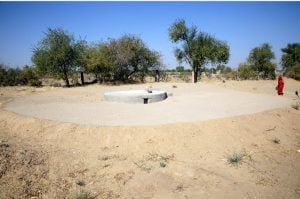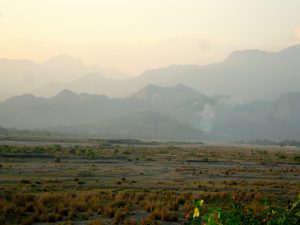Winter has come, and for China’s three north-eastern provinces, so has a blanket of smog. The region has leapfrogged the Beijing-Tianjin-Hebei area to become the most polluted in China in 2015. Levels of PM2.5 in Shenyang, the capital of Liaoning, hit a daily average 1156 micrograms per cubic metre earlier this month, and peaked at 1400mg per cubic metre – 56 times the limit declared safe by the World Health Organisation (WHO).
The thick and persistent smog forced the cancellation of almost one hundred flights and left hospitals overwhelmed, with patients suffering the ill effects of toxic air pollution. The north-eastern provinces of Liaoning, Jilin and Heilongjiang struggled to cope with the latest air pollution crisis. Two years ago extremely high smog levels caused widespread alarm in the region, with the images making headlines across the world.
Air in the Beijing-Tianjin-Hebei region had long regarded as China’s most polluted, but a failure to control coal use in the north-east, particularly in district heating systems, also contributes to an ‘airpocalypse’ that is a major public health concern and a blight on quality of life.
After Beijing was hit by severe smog in 2013 an air pollution action plan was put into effect so that coal use would fall by 2017 – but these measures were mainly focussed on controlling coal use in the capital, its neighbours Tianjin and Hebei, and in the Pearl and Yangtze deltas.
Because that action plan disregarded the north-east, the region is enduring another dose of heavy smog, said Dong Liansai, an analyst and campaigner with Greenpeace.
These new outbreaks of air pollution “show that coal restrictions need to be comprehensive, or problems will spring up in other areas,” said Yang Fuqiang, Senior Adviser on Climate, Energy and Environment for the National Resources Defense Council’s China Program.
The heat is on
A report on coal’s role in China’s air pollution crisis, to which Yang contributed, found that about 60% of PM2.5 pollution is due to the burning of coal by power plants, district heating and industry. The contribution of coal to air pollution is particularly strong in the north, north-east and east of China, and in the south-western Chinese cities of Chengdu and Chongqing.
Officials often point out that other sources are also responsible for chronic air quality, such as vehicles and dust from construction. And this time of year, seasonal events are added to the list of culprits. At a press conference in Changchun, the capital of Jilin, smog was attributed to the burning of straw stubble.
But experts point out that high-sulphur coal in district heating systems is by far the primary cause of the north-east’s dreadful air quality in recent weeks. Northern Chinese cities often operate district heating systems powered by coal-burning boilers – which last month were fired up for the winter, and usually operate until March.
Coal approvals rise
As China readies its 13th Five Year Plan, policymakers should impose nationwide limits on coal use during the 2016-2020 period, said Greenpeace’s Dong. Otherwise, more areas will suffer severe smog seen in Beijing and the north-east.
Meanwhile, making big cuts in the amount of coal-fired power remains a huge challenge, as new plants are being approved at a faster pace than last year. Many will replace older coal-fired power plants, but even the most technologically-advanced facilities emit harmful particulates and are a major source of carbon emissions.
A Greenpeace report published on November 11, Is China doubling down on its coal bubble?, points out that although the government wants to see cleaner, lower-carbon energy use, China is still engaged in ‘Great Leap Forward’ development of coal-fired power. Every week, four new coal-fired power plants are approved by provincial authorities after the Ministry of Environmental Protection devolved control of such decisions earlier this year, although far fewer than that number will likely be built.
Health effects
According to the report, 155 coal-fired power plants were approved between January and September this year – more than for the whole of 2014. Construction of these plants would mean the release of an extra 96,000 tonnes of sulphur dioxide, 124,000 tonnes of nitrogen oxides, and 29,000 tonnes of ash.
The report added that the resulting increase in PM2.5 pollution – tiny particles that are deemed particularly harmful to human health, will result in 6,100 premature deaths, 7,600 extra cases of childhood asthma, 9,800 cases of chronic bronchitis and 8,100 hospital admissions for respiratory and cardiovascular problems annually. And this is assuming each plant is built to low-emissions standards, the report added.
Official and NGOs agree that air quality in China improved in the first half of this year – but the coldest months of the year will mean more pollution. The environmental authorities have said coal burning for heating during the cold months accounts for 30% of annual PM2.5 pollution. For residents of China’s northern cities, the use of coal and the resulting smog will, once again, be a source of discontent this winter.
This article was first published by chinadialogue, to view the orginal article click here.








